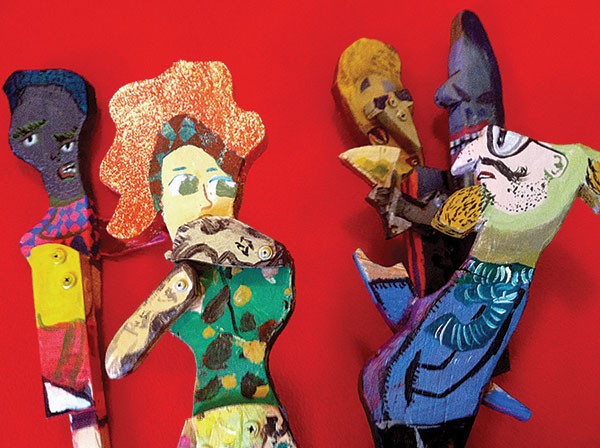Tom Sarver's art is characterized by a satire so gentle that it can be hard to tell whether it's meant as criticism. Often, an established institution, in the broader sense of the word, is adapted to fit Sarver's artistic program. For example, The Tom Museum (2006-2008), though sponsored by the Mattress Factory museum and located in one of its satellite row houses, was not actually a museum. Rather, it toyed with the idea of "museum" as a nexus for the collection, presentation and even production of art. Throughout, the tone was light and open and generous, as Sarver extended to other artists some opportunities to exhibit.
That symbiotic relationship is typical of contemporary art museums, which provide such opportunities while also needing the artists' products to fill their galleries. But The Tom Museum was mostly an evolving installation of artwork made by Sarver himself. It was an artist's project that, though low-key and uncontentious, felt like a gentle rejoinder to the (somewhat beleaguered) view of curators as indispensible arbiters of taste.
Similarly, Sarver presented on numerous occasions between 2007 and 2013 the Art Olympic Theatre, in which teams of artists raced against the clock to produce works that were judged competitively by a panel of arts professionals. This combination of art, performance and social interaction also underlay Sarver's Bait & Tackle (2009), a paean to fishing, rural life and the bait store as community center. For his current exhibit, The Occasional Market, Sarver again adapts the concept of "store," though in this case riffing on art-gallery-as-store.
In 707 Penn Gallery, which is a storefront, Sarver combines the concept of nonprofit art gallery with the concept of store in a sendup of commercial art galleries, some of which are present in Pittsburgh but don't exactly dominate the scene. Sarver, who grew up in the area, builds on his background and experience, as his grandfather owned a grocery store in Pittsburgh. If anything, the "store" element seems underplayed, as most aspects of the display are in line with conventional gallery display — grey walls (white walls seem so yesterday), professionally framed works, and paintings on stretched canvas nicely spaced and hung at eye level. The nods toward an actual market include a roll of butcher paper, some shallow shelves and a couple of tables in lieu of pedestals. But those elements feel minor and are overshadowed by, for example, the track lighting dear to art galleries.
With art in various mediums, there is some sense of miscellany that could suggest that we are perusing the goods of multiple suppliers; one visitor to the gallery did ask the attendant who the artists are. But most of what's present are Sarver's drawings, assemblages and mixed-media collages in his signature style of loose, slightly wacky cartoonish expressionism. It's a style that a few years ago suddenly seemed to be everywhere, but Sarver had a deep claim to it, having spent decades making figurative puppets, while also being a core organizer of Pittsburgh's long-running (and now defunct) Black Sheep Puppet Festival.
This exhibit's press release promises interactivity, which might occasionally be true when the artist is in the gallery "making alterations, playing records, performing puppet shows, and pawning his wares," but for most visitors the experience is not one of social interaction. It's art to be looked at, pure and simple, and fortunately, Sarver's artwork is rewarding and varied.
Canvases feature homey stories — Richard Prince-like texts but without the misogyny and misanthropy. Whether handmade or bricolaged, the small sculptures run a gamut of quirkiness, from tiny clay spaceships to a tower of plastic bottlecaps to whatnots of wood scraps left over from cutting out other shapes. (It's the "hamburger strategy" pioneered in art by Frank Stella's sculptures: No scrap goes to waste.) The puppet-like painted wooden figures are delights, each a small sculpture representing a distinct character. (A group of similar pieces was exhibited in the 2013 Carnegie International under the auspices of invited artist Paulina Olowska.)
For me, Sarver's drawings such as "Good & Plenty" (2012) stand out, combining a multitude of images yet cohering through being rendered in a single medium. By comparison, the collages are cacophonous, layering paint upon images, though we can extract tidbits of humor, grace, imagination and environmental concern.
While The Occasional Market doesn't feel much more store-like than most galleries, it evokes the kind of store I prefer to patronize. Fresh, local and amiable, it's mercantilism with a touch of humanity.


